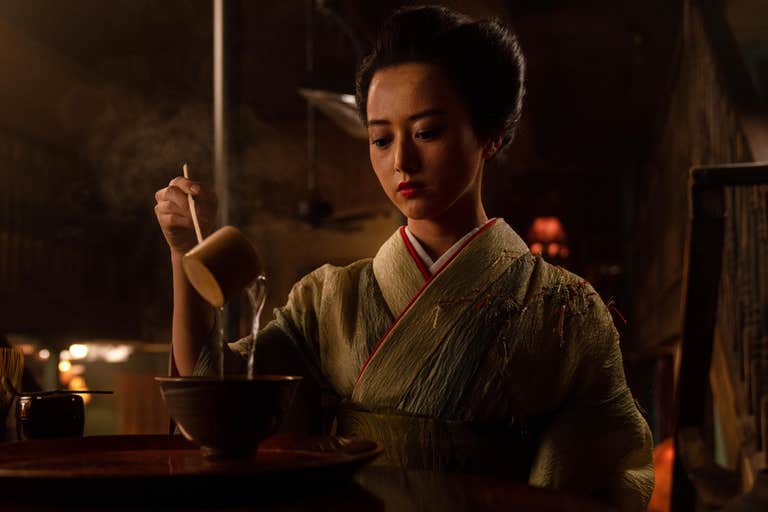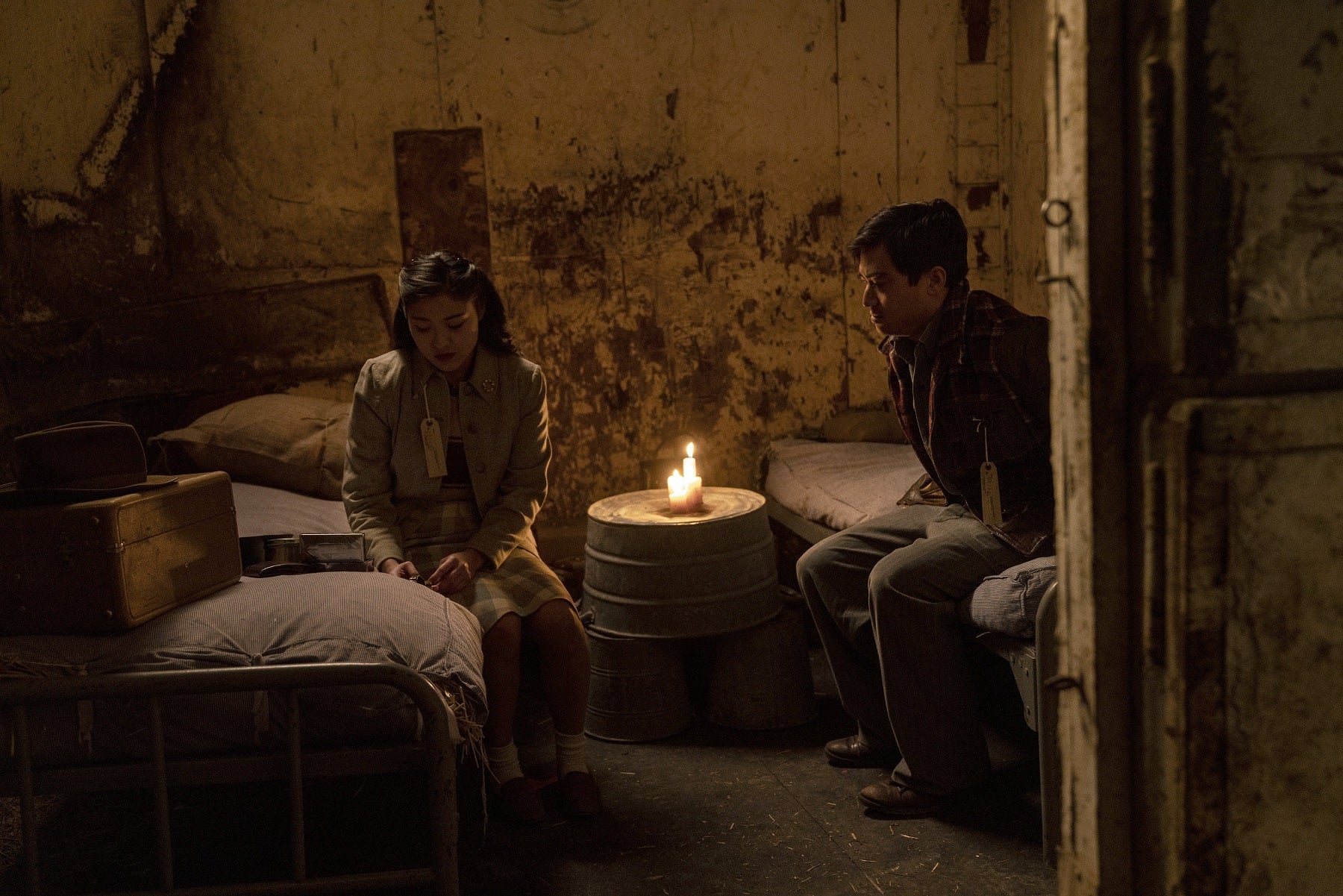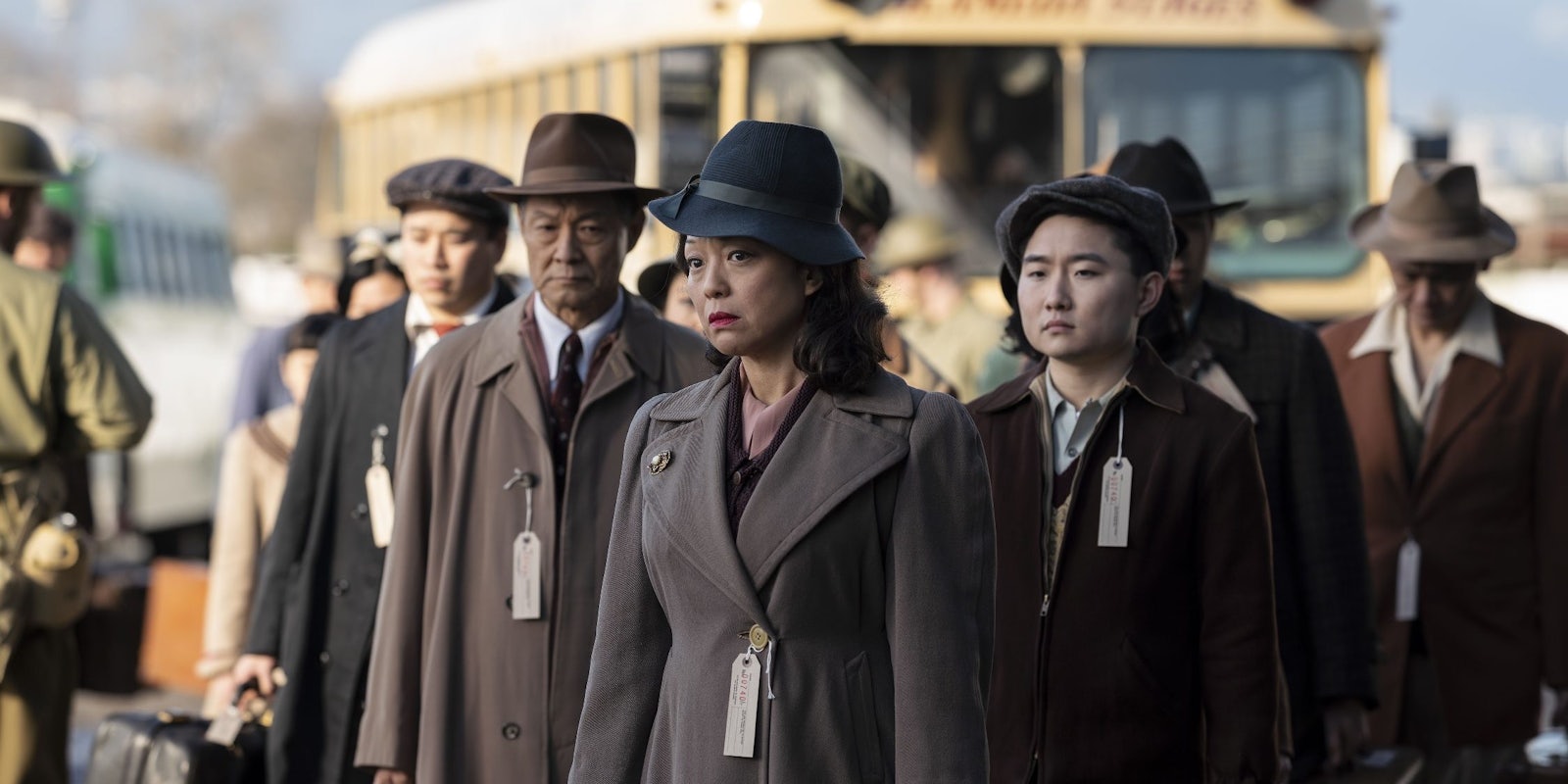With an entirely new cast, concept, and creative team, The Terror: Infamy is unrelated to The Terror’s cult-hit first season. It shares only a vaguely similar theme: Take a disturbing historical setting and add supernatural horror. Season 1 covered a doomed 19th-century British mission into the Arctic, where characters slowly died from a combination of hubris, frostbite, and monster attacks. Set during World War II, The Terror: Infamy primarily takes place in an internment camp, where Japanese-American families are imprisoned by the U.S. government—and haunted by a murderous spirit.

CREATORS: Max Borenstein, Alexander Woo
STREAMING: AMC
The follow-up to ‘The Terror’ brings supernatural horror to a Japanese internment camp.
Thanks to America’s rose-tinted view of WWII, mainstream historical fiction often ignores wartime internment camps. Nazis and battlefield heroism are irrelevant here, as the show focuses on the lives of Japanese immigrant families under white American racism. Most of the main characters lived peacefully alongside their white neighbors until Pearl Harbor, at which point xenophobic paranoia abruptly snuffed out their American dream.
Raised in a Japanese fishing community in California, Chester Nakayama (the instantly likeable Derek Mio) is an aspiring photographer who hopes to build a life with his pregnant girlfriend Luz (Cristina Rodlo). He has a different image of prosperity than his father Henry (Shingo Usami), a first-generation immigrant who thinks his son is frivolous and immature—and is totally unaware Chester is dating a Mexican-American woman.
This conflict is superseded by more urgent concerns with the issuing of Executive Order 9066. The army rounds up Chester’s entire community and buses them to a concentration camp, where they will remain until the end of the war. Some of the older men, like Chester’s father and the elderly Yamato-San (George Takei, who was imprisoned in a similar camp as a child), are arrested and interrogated first, as the government tries to unearth nonexistent allegiances to Japan. “They see us like rats,” says Henry, whose pride has soured into bitter cynicism.

For at least the first few episodes, The Terror: Infamy works better as a historical drama than a horror story. Despite the setting, it’s less bleak than one might expect. The show draws obvious parallels to present-day events, and we root for Chester and his family’s survival in the face of oppression. They’re more sympathetic than the quixotic cast of season 1, but Infamy’s horror moments (mostly demonic possession and unexplained hauntings) don’t feel especially scary until about halfway through the season, when we learn more about the supernatural threat.
As any horror fan knows, ghosts and monsters are attracted to trauma, attaching themselves to people and places where unspoken darkness lurks. An internment camp is an ideal breeding ground for this kind of creeping dread, and we know from the start that Chester’s community is haunted by something. Spreading from a mysterious young woman named Yuko (Kiki Sukezane), these insidious forces cause people to commit violent and disturbing deeds.
Co-created by Max Borenstein and showrunner Alexander Woo, The Terror: Infamy draws heavily from historical sources and Takei’s own experiences, as well as Japanese folklore and ghost stories. The show obviously wants to be historically conscientious, but since episode 1 opens with a gruesome death, there’s an overlapping expectation for grisly supernatural horror. Although characters speculate about yurei and obake from the get-go, the most interesting scenes in earlier episodes have nothing to do with ghosts at all. It takes a few episodes for the two halves of the show to come together, connecting the threads of undead horror, wartime peril, and family secrets.

Motivated by “ravenous hunger for restitution,” Infamy’s ghostly antagonist has a compelling and unexpected backstory. Horror movies tend to run short, and aside from a few rare exceptions like The Haunting of Hill House, it’s hard to sustain terror over multiple episodes. But longform dramas do offer more time to explore the motives and emotional lives of monsters that would be relatively simple in a 90-minute movie. Like Hill House, Infamy digs deeper into a traditional ghost story by exploring both sides of a haunting: the fear and helplessness of the human victims, and the inescapable pain of the unquiet dead. Both feel powerless against their circumstances, but with Chester’s family facing both vengeful spirits and systemic racism, the yurei presents an enemy they might actually defeat.
Judging by the six episodes made available for review, The Terror: Infamy is steadily ramping up to an intense finale. Comparatively light on gore, the show emphasizes thematic dread with occasional moments of grotesque horror. (My personal favorite involved a revolting undead corpse curled up neatly inside a duffle bag like a sleeping child.) With well-drawn roles for the ensemble cast, this isn’t one of those prestige miniseries that lags with stylish but overlong episodes. The story moves forward at a fair pace, benefiting from a rare kind of leading man—a nice person who isn’t violent or self-absorbed—and an atmospheric setting. The Terror: Infamy not only lives up to the historical-horror fusion of The Terror, but it does a better job of fitting mythological elements into the wider story.
The Terror: Infamy premieres on AMC on Aug. 12.


